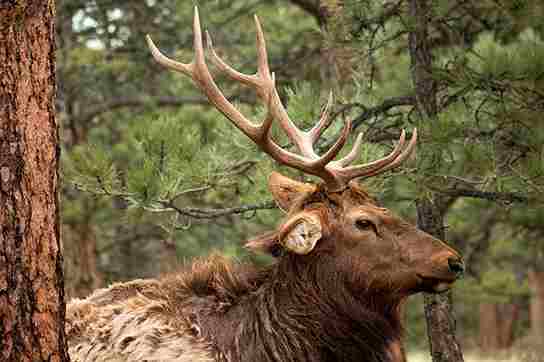Coyote Call: What They Are & How to Choose
There are two main things you need to succeed when hunting coyotes – ammo and a coyote call. Of course, your hunting skills should never be in question.
Chances are that if the rifle you’re using provides precision and is comfortable for you, you will find it relatively easy to gun down any coyote and most prey.
But, in order to succeed, the coyote needs to come into a shooting range. One easy way to make this possible is to use a coyote call makes.

What is a coyote call called?
A coyote call is a device or technique used to mimic the sounds of coyotes or other prey animals to attract them for hunting. In other words, it is used to call up coyotes to a shooting range, so you can have an easy kill.
Coyote calls can be electronic devices, like FOXPRO Calls or Primos Coyote Calls, or handheld mouth calls, such as reed or diaphragm calls.
What kind of noises do coyotes make?
Coyotes make a variety of noises, which can be used in a coyote hunting call to attract them. Some common coyote noises include:
- Distress calls: These sounds mimic prey animals in distress, such as rabbits or rodents, and are used to attract hungry coyotes.
- Howls: Coyotes use howls for communication, to locate other pack members, or to announce their presence in an area.
- Yips and barks: These sounds are used by coyotes to communicate with each other or to express excitement, agitation, or curiosity.
- Growls and snarls: Coyotes use these sounds to show aggression or to establish dominance during confrontations with other coyotes.
Incorporating these sounds into your coyote hunting calls can help you attract and locate coyotes more effectively.
Types of coyote hunting calls
The two main types of coyote hunting calls are electronic and mouth calls.
Electronic coyote calls
Electronic coyote calls are devices that produce a variety of high-quality, realistic animal distress sounds to lure coyotes into your hunting area. Some popular electronic coyote calls include FOXPRO calls and Primos Coyote Call.
Pros:
- Offers a wide range of coyote call best coyote call sounds
- Easy to use
- Can be operated remotely
Cons:
- Can be expensive
- Requires batteries
Mouth calls
Mouth calls are handheld devices that you blow into to produce coyote-attracting sounds. They come in various designs, such as reed and diaphragm calls.
Pros:
- Affordable
- Lightweight and portable
- Allows for more control over the sound
Cons:
- Requires practice to master
- Limited sound variety
What is the best call for coyote hunting?
The best call for coyote hunting depends on your preference, budget, and experience. Many hunters prefer electronic calls like FOXPRO Calls, Primos Coyote Call, or ICOtec GC500 due to their ease of use, wide range of sounds, and remote operation. On the other hand, some hunters prefer mouth calls because they offer easier control and are more affordable. Ultimately, the best call for you is the one you feel most comfortable and successful using.
Having said that, here are the 3 best coyote call I absolutely recommend:
- FOXPRO Calls: FOXPRO is a well-known brand in the electronic call market, offering a variety of high-quality calls with numerous preloaded sounds. The Foxpro X Series works great for coyotes. It comes with a remote and can be programmed.
- Lucky Duck Coyote Call: This one comes with numerous predator sounds for different animals, including crows, coyotes, and geese. It runs on batteries, so you have to be sure electronic calling is allowed in your area.
- Primos Coyote Call: The Primos Alpha Dogg is an excellent electronic call with 75 preloaded sounds, a 200-yard remote range, and a powerful speaker system.
- ICOtec GC500: This electronic call offers 200 preloaded sounds, a 300-yard remote range, and an easy-to-use interface.
Calling coyotes with rabbit distress call
A rabbit distress call is one of the most effective sounds for luring coyotes. To use a rabbit distress call effectively, follow these tips:
- Choose a suitable location: Set up in an area with good visibility and a natural barrier behind you, such as a tree or a bush.
- Use a bait: Dead rabbits or birds can also be used as decoys to lure coyotes to your location. If you don’t have any dead animals, you can also opt for a commercial-available decoy or bait.
- Call sequence: Start with a few minutes of soft calling, gradually increasing the volume for a few minutes. Then pause and wait for a little while. Repeat the process again.
Coyote calling sequence with FOXPRO
A successful coyote calling sequence using a FOXPRO call involves the following steps:
- Choose the right sound: Begin with a rabbit or rodent distress call, as these are some of the most effective sounds for attracting coyotes.
- Vary the volume: Start with a lower volume and gradually increase it, mimicking the distress calls of a struggling animal.
- Introduce coyote vocalizations: After 15-20 minutes, switch to coyote vocalizations like howls or yips to mimic a pack of coyotes in the area.
- Take breaks: Pause between calling sequences to listen for approaching coyotes.
Best coyote call sound at night
Coyotes are primarily nocturnal, so hunting them at night can be highly effective. The best coyote call sounds for night hunting include:
- Rabbit distress calls: These calls work well both during the day and at night. As mentioned earlier, rabbit distress calls are highly effective in attracting coyotes.
- Coyote vocalizations: Howls, yips, and barks can be useful at night to convince coyotes that there’s a pack in the area or to challenge territorial coyotes.
- Bird distress calls: Distressed bird sounds, such as those of a crow or a woodpecker, can also be effective at night.
Remember that coyotes have excellent night vision, so make sure you’re well-hidden and minimize movement when hunting at night.
How to do a coyote mouth call?
To do a coyote mouth call, follow these steps:
- Choose the appropriate mouth coyote call, like a reed or diaphragm call designed for coyote sounds.
- Position the mouth call correctly. For reed calls, place the reed end in your mouth with your lips sealed around the edges. For diaphragm calls, place the call on the roof of your mouth with the latex facing outward and the open end towards the front of your mouth.
- Apply pressure with your tongue, lips, or jaw to control the air passing through the call. Vary the pressure and airflow to produce different sounds, such as distress calls or coyote vocalizations.
- Practice regularly to master the technique and experiment with different sounds and calling sequences.
Final thoughts on coyote calls
Mastering coyote hunting calls can significantly improve your success in the field. Whether you’re using electronic calls like FOXPRO or mouth calls like the Primos Coyote Call, practice is key. Try to experiment with different sounds if possible, especially when starting out.
Remember to keep to the hunting regulations in your area.






